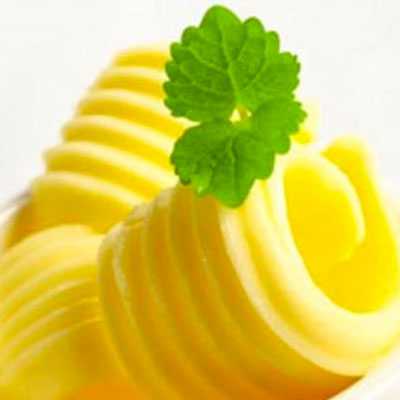The Origin of Pizzelle
Pizzelle cookies hold a cherished place in Italian culinary history. Their origins can be traced back to ancient Roman times, making them one of the oldest known cookies. The name 'pizzelle' itself comes from the Italian word "pizze," meaning round and flat. Many believe these cookies originated in the South-Central region of Abruzzo, where they were initially made on cast iron grills over an open flame.
Traditionally, pizzelle were made during celebrations and festivities, particularly for Christmas and Easter. Each cookie would often bear the family crest or a symbolic design, as pizzelle irons were custom-made for families. These designs could range from intricate floral patterns to religious symbols, adding a personal touch to the cookies. The art of making pizzelle was typically passed down through generations, with each family having its unique recipe and design.
Today, pizzelle making continues to be a beloved tradition, especially among Italian families around the world. Modern electric pizzelle irons have made the process more accessible, allowing this delightful tradition to endure. Pizzelles are not only a festive treat but also a connection to cultural heritage and family history. They are enjoyed not just for their delicate flavor and crisp texture, but also for the memories and sentiments they evoke, especially during holiday gatherings and special occasions.
Variations and Substitutions
Pizzelle cookies are wonderfully versatile, allowing for various adaptations to suit different tastes and dietary needs. Here are some variations and substitutions you can try:
Flavor Variations:
- Citrus Zest Pizzelles: Add lemon, orange, or lime zest to the batter for a fresh, citrusy flavor.
- Chocolate Pizzelles: Incorporate cocoa powder into the batter for a chocolate version. You can also add mini chocolate chips.
- Spiced Pizzelles: Mix in spices such as cinnamon, nutmeg, or cardamom for a warm, spiced flavor.
- Almond Pizzelles: Use almond extract instead of vanilla or anise and add finely chopped almonds to the batter.
- Coffee Flavored Pizzelles: Add espresso powder to the batter for a subtle coffee flavor.
Dietary Substitutions:
- Gluten-Free Pizzelles: Use a gluten-free flour blend instead of regular all-purpose flour to make gluten-free pizzelles.
- Vegan Pizzelles: Substitute eggs with a flax egg (1 tbsp ground flaxseed mixed with 3 tbsp water per egg) or commercial egg replacers. Use plant-based butter as well.
- Dairy-Free Pizzelles: Use dairy-free butter or coconut oil in place of regular butter.
Pizzelle vs Stroopwafels
Pizzelles and stroopwafels are different cookies. Pizzelles are thin, crispy, and flat cookies made with ingredients like flour, eggs, sugar, and butter. They can be enjoyed on their own, shaped into cones with ice cream, or filled with cream for sandwich cookies.
Stroopwafels are thin waffle-like cookies filled with a chewy caramel-like syrup. People often place them on hot drinks like coffee or tea to soften the syrup.
Even though both are thin and go well with hot drinks, stroopwafels and pizzelles have different textures, fillings, and cultural origins, giving a variety of flavors and experiences.
How To Serve Pizzelles?
- Dusted with Powdered Sugar: For a simple yet elegant touch, dust the pizzelles with powdered sugar before serving.
- Sandwich Cookies: Spread jam, Nutella, or a buttercream filling between two pizzelles to make sandwich cookies.
- Cannoli Shells: While still warm, quickly roll the pizzelles around a wooden dowel to form tubes. Fill with cannoli cream once cooled.
- Ice Cream Cones: Mold the warm pizzelles into cone shapes and use them as homemade ice cream cones.
- Dipped in Chocolate: Dip half of each pizzelle in melted chocolate and let it harden for a decadent treat.
These variations and substitutions make pizzelle cookies a delightful treat for any occasion, catering to a wide range of tastes and dietary preferences. Whether you stick to the traditional recipe or experiment with new flavors, pizzelles are sure to be a crowd-pleaser.
How To Store Pizzelles?
Storing pizzelle cookies properly is essential to maintain their crisp texture and delicate flavor. Here’s how to store them effectively:
Short-Term Storage:
- Ensure that the pizzelles are completely cooled to room temperature before storing. This prevents any steam buildup, which could make them lose their crispness.
- Store the pizzelles in an airtight container. Tin cans, plastic containers, or even large zip-top bags work well.
- If stacking pizzelles in a container, consider placing a piece of parchment paper or wax paper between layers to prevent them from sticking together.
- Keep the container at room temperature in a dry place, away from direct sunlight and heat sources.
Long-Term Storage:
- For longer storage, pizzelle cookies can be frozen. Place them in a freezer-safe container or bag, separating layers with parchment paper to prevent them from sticking together.
- When properly stored, pizzelles can last in the freezer for up to 3 months. This is a great way to preserve their freshness if you've made a large batch or want to keep them on hand for unexpected guests.
- To thaw frozen pizzelles, simply remove them from the freezer and let them sit at room temperature for a few minutes. They usually don’t take long to defrost due to their thin nature.
Additional Tips:
- Avoid Humidity: Humidity is the enemy of pizzelles. Store them in a place with low humidity to prevent them from becoming soft or chewy.
- Check for Freshness: Before serving stored pizzelles, especially those that have been frozen, check for any signs of freezer burn or a loss in flavor or texture.
- Do Not Refrigerate: Refrigeration can introduce moisture to the cookies, making them lose their crispness.
By following these storage tips, your pizzelle cookies will retain their delightful crispness and flavor, making them a perfect treat to enjoy over time. Whether you're savoring them with a cup of coffee or tea or serving them to guests, properly stored pizzelles will always taste as good as the day you made them.






































